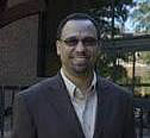Commentary on Mark 6:14-29
The report of John’s death, Jesus’ mentor (see Mark 1:9), was the end of innocence for Jesus’ mission.1
Placing this account between the commission and the return of the twelve disciples (during the heart of the expansion of the Jesus movement), Mark relayed the story of John and Herod as a foreshadowing of Jesus’ own death by the hands of a political, though sympathetic, figure. Immediately before Mark told this story—the only one in which Jesus was not the primary subject—he told the story of the rejection of Jesus at home.
The death of John the Baptist (Mark 6:14-29)
Mark chose this opportunity, after Jesus sent out his disciples on their first formal mission, to report the death of John the Baptist. Mark hinted at this political death earlier in the story when John was arrested (1:14), but saved the full report until chapter 6. Interpreters who choose to think that Jesus’ life and mission were disconnected from the socio-political affairs of his first century context must view this account (John’s death by Herod) as an aside. Using intercalation (i.e., the “sandwich” technique) once again, Mark placed this account between the commission and the return of the disciples to intimate its significance for the expansion of Jesus’ mission.
Despite what some scholars suggest, this scene is not an interlude. The manner of John’s death was intimately tied to the mission of Jesus. This story showed Markan narrative technique at its best. Not only did John’s message meet with political obstacles, so would Jesus’ and so would his followers’ (cf. Mark 13). John’s declaration of the unlawfulness of Herod’s marriage to Herodias would probably have been shared by Jesus as well (cf. Mark 10). In addition, marriages of this type already had huge political implications attached to them. (Compare the less sensational account in Josephus’ Antiquities of the Jews.)
At the beginning of the section, Mark offered transitional verses (verses 14-16) in order to express Herod’s views of the Jesus’ movement. Unlike others who thought that Jesus was a “prophet” (cf. 8:28), Herod thought that Jesus was a resurrected John (6:16). Herod’s assessment made a close link between the missions of Jesus and John. Not only was Jesus’ mission initiated only after John’s arrest, according to Mark, but Jesus’ continual activity was viewed by the “powers that be” as intimately associated with John’s. These close ties would appear again later in the story (cf. Mark 11:27-33).
The length and detail of this account were also significant. There is not enough space here to explore in depth Luke’s omission of this story or Matthew’s abbreviated version, but a few words are in order. Mark’s version was filled with detail and intrigue. Only Mark’s audience would have discovered other views of Jesus (besides Herod’s), Herodias’s grudge, and the specific conversation between Herodias and her daughter.
In addition, there was a relevant disagreement between Mark and Matthew on Herod’s view of John. In Matthew, Herod feared the people, who considered John to be a prophet (Matthew 14:5). In Mark, Herod feared John himself, considering him a “righteous and holy man” (dikaion kai hagion). Herod, in Mark, “protected” John (6:20) until the request came for his head. In Matthew, Herod wanted him killed (Matthew 14:5). Even after his agreement to fulfill his oath, Herod “deeply grieved” in Mark’s account (6:26). This word, perilupos (“deeply grieved, sadness”), was used only here and to describe Jesus’ feelings in Gethsemane (14:34)!
We should assume, in light of the description of Herod’s attitude towards John (in verse 20), that this was a sincere contrite feeling. Mark’s Herod was a sympathetic figure, whose public oath became his own demise. In the biblical tradition, oaths were not easily dismissed among Jews. The tension was depicted clearly at the end of 6:26.
Finally, Mark’s portrayal of women in this chapter deserves mention. Mark’s more sympathetic depiction of Herod did not carry over to Herodias. Her grudge against John finally found its satisfaction—by means of her daughter’s entertainment value—as she became the person most responsible for John’s death in Mark’s account. (Josephus blamed John’s death entirely on Herod, never mentioning Herodias or her daughter in his account of the murder.)
While most of the positive examples of women in the story were unnamed, this woman of high standing received her name, as well as her “prize” on a platter. Yet, her reward halted the work and mission of the messenger sent by God. So, her overall role would have been viewed in a negative light. To be fair to Mark, the author bracketed this portrayal of two negative female characters with two positive female images (cf. 5:24-24 and 7:24-30).
Many scholars have imagined a highly charged sexual event in the dance, partly due to Western scholarship’s interpretive views of the “Orient.” A number of feminist biblical scholars have rightly challenged this interpretation. Mark simply writes that she “came in and danced, (and) she pleased Herod and his guests” (6:22). Mark described Herodias’ daughter as a korasion (verse 22), which was used only here and for the 12-year old “little girl” in 5:41-42.
It seems that their daughter (since she was Herod’s daughter, too; 6:22) was young. At the same time, John could not have died a more ignominious death in the culture of the first century … at the instigation of a woman. As Janice Capel Anderson stresses: “(T)o die in battle at the hands of enemy soldiers is honorable. To be executed or to die at the hands of a woman is a mark of shame.”1
However one understands the relationship between John and Jesus, one thing is certain: agents of God who challenge those in power usually suffer significant consequences.
Notes
- Commentary first published on this site on July 15, 2012.
- “Feminist Criticism: The Dancing Daughter.” In Mark & Method: New Approaches in Biblical Studies, 2nd edition. Eds. Janice Capel Anderson and Stephen D. Moore (Fortress Press, 2008), 111-144 [126].


July 11, 2021